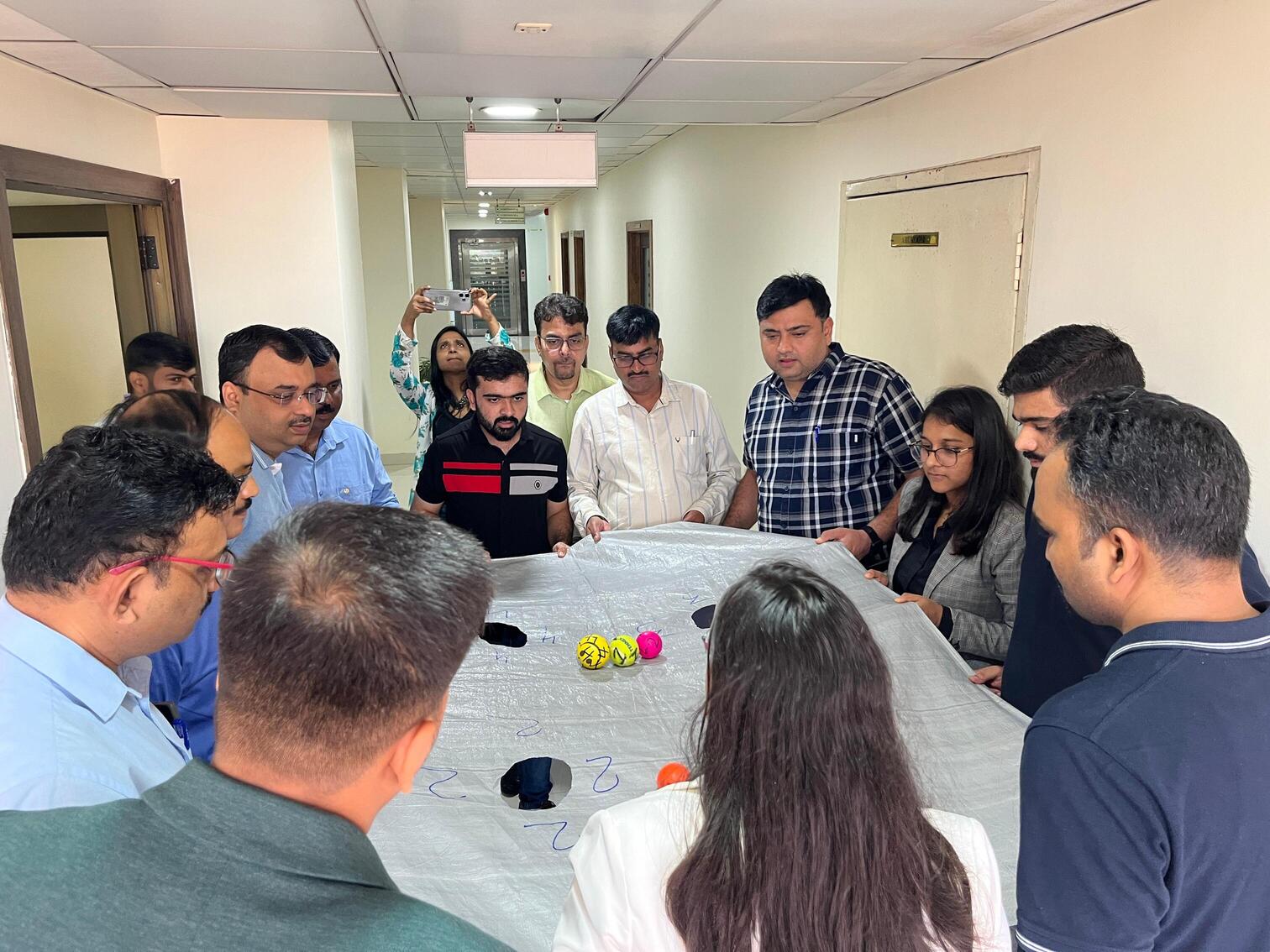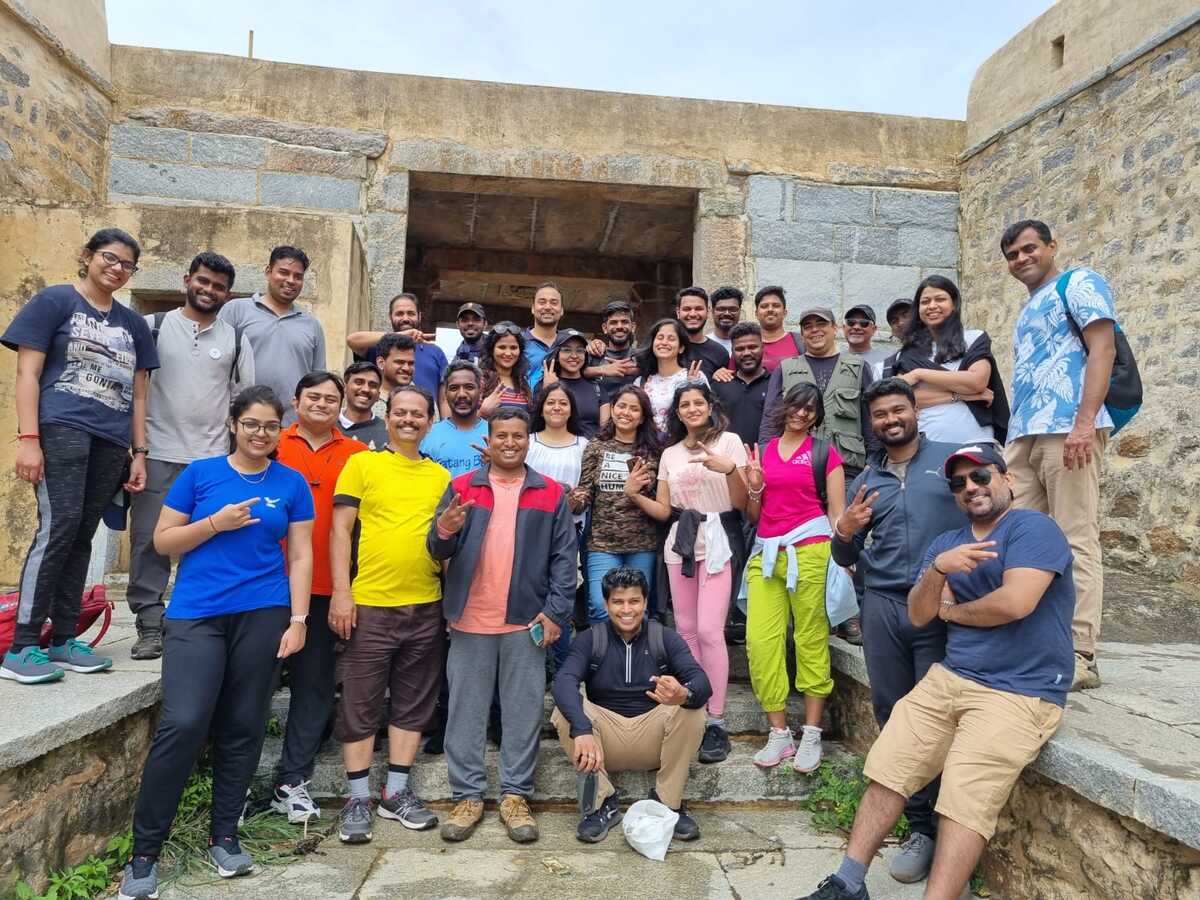
Today’s learning approach is completely different from traditional learning approach when it comes to corporate trainings and team building programs. Employees don’t want to just learn. Due to low attention span; thanks to social media and multiple other content platforms, getting people immersed in educational content has become difficult.
Today’s most corporate training sessions are not so productive, especially in virtual learning activities. So, what is the best way for your employees to learn with fun? The answer is experiential learning, where the actual magic happens. You can check out how Corporate Compass delivers engaging experiential learning workshops for modern corporate teams.
In this blog, we will give you a deep insight into the world of experiential learning, explain why it works, how it benefits teams, and how to implement it effectively. Whether you’re an HR professional, team lead, or entrepreneur, understanding this approach can truly be a game-changer for your training outcomes.
Before knowing about the benefits, let’s understand

Experiential learning means learning by doing. That means instead of just reading, watching videos, or listening to a trainer talk, people actually practice the task. For example, instead of just learning about teamwork or anything in a slideshow, employees will do a group activity where they actually solve a problem together. This kind of learning helps employees understand things more clearly and remember them longer, because they experienced it, not just heard about it.
Just think of it this way: Would you learn to swim by reading books? Of course not, you have to swim, just reading books to swim will not work. That’s what experiential learning is all about: you learn best by actually doing the thing, not just hearing or reading about it.
The best part is that this kind of learning utilizes fun and practical activities, such as role-plays, games, team challenges, real-world projects, and case studies. It’s not at all just sitting and listening, it’s about getting involved. These activities put people in real situations, so they can practice skills in a way that feels more like real life. This really makes the learning more interesting, useful, and easier to remember.
Traditional corporate training is mostly:
This can, of course, lead to low retention, minimal behavior change, and boredom. Here, experiential learning is a game changer.

When people actually take part in an activity, they’re much more likely to remember what they learned, right?. Doing something like talking, moving, or solving problems uses more of our senses, which helps the brain remember better and effectively prepare for real-life situations.
The truth is nobody enjoys sitting in a long, boring webinar session where someone just keeps talking the whole time. It’s difficult to stay focused, and people lose interest very quickly. Experiential learning is completely different. It’s active, hands-on, and also includes fun challenges or games. Because people are doing something, not just listening, they will stay more engaged, feel more excited, and be more motivated to learn something. If you’re looking to build this kind of interactive training, explore our corporate training solutions crafted to boost engagement and real-world impact.
As discussed in experiential learning, people don’t just sit and listen; they have to think quickly, adjust to new situations, solve problems, and make decisions on the spot. This really helps them become more flexible, creative, and confident when facing real challenges. These are really important skills at work. When employees learn to think strategically and solve problems well, it not only helps them grow in their careers but also makes the company stronger and more successful. So, it’s a big win for both the employee and the business.
One of the best things about experiential learning is that employees can make mistakes without any real-life risks. Since it’s a safe learning environment, no one gets hurt, nothing gets damaged, and the company doesn’t lose anything. This is where employees can grab the opportunity to learn from mistakes. They remember the lessons for a long time, and it helps them grow and improve. That’s how real learning and personal growth happen: by trying, failing, and getting better each time.
In experiential learning, participants get feedback right away at the session. Feedback can come from trainers, teammates, or even by thinking about people’s actions and results. It helps them understand what they did well and what they need to improve. It also helps them to take responsibility for their actions and stay focused on learning. When people keep getting feedback and take time to think about what they learned, they understand it better and remember it more deeply.
Experiential learning includes real tasks, challenges, or goals. Because of this, it’s easy to see how effectively someone is doing the tasks. You can measure their performance, track their progress, and see what they’ve learned over time. It also helps companies to understand if the training is working or not, or if it is worth the investment, which is called ROI (Return on Investment). In short, it’s easier to see results when people learn by doing.
When you invest money and effort into experiential learning it is really worth it. When employees learn by doing something, they become better at their jobs. They feel very confident, make fewer mistakes, and work more efficiently. They will also be happier at work, so they’re more likely to stay with the company for a longer time. Overall, they bring more value to the team and help the company grow.
Every day, employees face new challenges, tasks, new learning, etc. If they do not adapt to the changes and move ahead otherwise, they will be in the same place. Since experiential learning is all about solving a problem in a simulated situation where they need to think quickly, adjust their actions, and solve unexpected problems, they learn how to adapt in different situations. This kind of practice makes it easier for them to handle changes at work, like new tools, team structures, or responsibilities, without stress.

Walmart uses Virtual Reality (VR) in its training so that employees can learn real problems without any risk. For example, they can practice handling huge crowds or tricky customer service situations through VR. This is where employees can learn how to make smart decisions in a safe and controlled environment. Because of this method, employees feel more confident, and they need less time to complete their training.
Nike uses something called Obeya Rooms (a method from lean manufacturing) to help teams work better together. These are special rooms where team members can meet, share ideas, and solve problems as a group. Here, everything is open and clear, so everyone stays on the same page. This setup helps teams to make faster decisions, come up with new ideas, and work more efficiently.
|
Benefit |
Why It Matters |
|
Boosts Engagement and Motivation |
Keeps employees active, interested, and excited to learn |
|
Improves Critical Thinking & Problem Solving |
Builds decision-making, creativity, and confidence to handle real work challenges. |
|
Creates a Safe Space to Make Mistakes |
Employees can fail without consequences, learn from it, and grow. |
|
Provides Immediate Feedback |
Helps learners quickly see what they’re doing right or wrong and improve faster. |
|
Makes Progress Measurable |
Real tasks make it easier to track performance and training effectiveness (ROI). |
|
Boosts Long-Term ROI |
Leads to better job performance, fewer mistakes, and higher employee retention. |
|
Increases Adaptability |
Prepares employees to handle change, new tools, or responsibilities with ease. |
Experiential learning isn’t something that you can ignore, it’s a must-have thing in today’s corporate training. Employees don’t want to hear facts or instructions; they need to grow, improve, and be ready for real challenges. That’s exactly what hands-on, real-life activities help with.
So, whether you’re organizing a small training session for your team or a big learning program for the whole company, try making experiential learning the major part of it. It won’t just make the training more effective, it will help build a smarter, more confident, and more successful team.
1. What are some common examples of experiential learning activities?
2. Is experiential learning suitable for remote or hybrid teams?
3. How can we measure the success of experiential training?
4. Do experiential learning activities require a high budget?